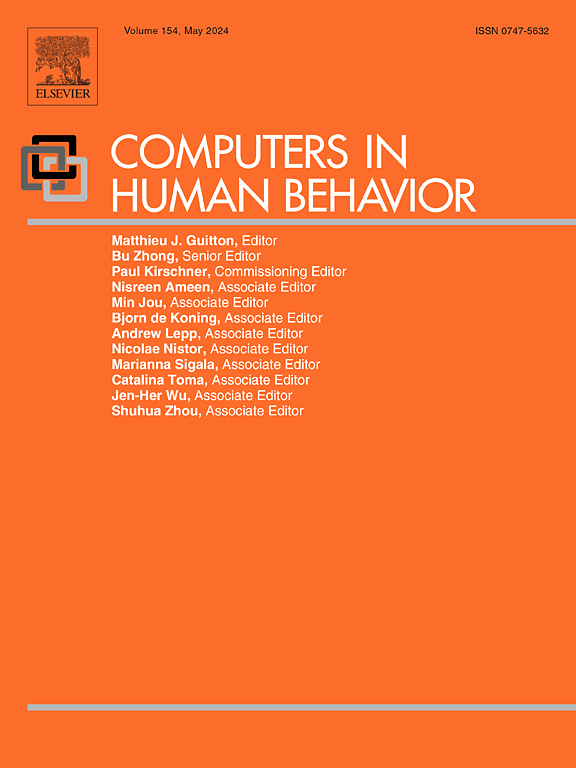Time versus timing in social cognition: How concurrent viewer cues and plot-aligned Danmaku affect narrative outcomes on online video platforms
IF 9
1区 心理学
Q1 PSYCHOLOGY, EXPERIMENTAL
引用次数: 0
Abstract
This study explores how temporality affects online video consumption and narrative engagement on online video platforms, focusing on two dimensions—time (concurrent viewer cues, which display the number of viewers who have watched or are currently watching a video) and timing (Danmaku, on-screen scrolling comments appearing randomly or at crucial plot points). Within the context of online video-sharing social media, we highlight how these temporal features function as socio-psychological cues that shape human behavior in online settings. Drawing on social presence and narrative engagement theories, we conducted two online experiments (N study 1 = 661; N study 2 = 342), manipulating concurrent viewer cues (simultaneous vs. past viewing) and Danmaku timing (plot-aligned vs. random) in narrative videos. Results indicate that displaying past (versus simultaneous) viewer cues and randomly timed (versus plot-aligned) Danmaku comments boost perceived social presence, subsequently fostering viewer engagement. Our findings demonstrate how specific social cues on online video platforms would impact social cognition, narrative involvement, and digital information processing, providing insight into the psychological effects of computer-mediated communication. Our study contributes to theorizing the role of temporality in online video narratives and its impact on viewers’ information-processing mechanisms in digital storytelling.
社会认知中的时间与时机:同步的观众线索和情节一致的团戏如何影响在线视频平台上的叙事结果
本研究探讨了时间性如何影响在线视频平台上的在线视频消费和叙事参与,重点关注两个维度:时间(并发观众线索,显示观看或正在观看视频的观众数量)和时间(Danmaku,屏幕上随机出现的滚动评论或关键情节点)。在在线视频分享社交媒体的背景下,我们强调了这些时间特征如何作为社会心理线索,在网络环境中塑造人类行为。利用社会存在和叙事参与理论,我们进行了两个在线实验(N研究1 = 661;N研究2 = 342),在叙事视频中操纵并发观众线索(同时观看vs.过去观看)和Danmaku时间(情节一致vs.随机)。结果表明,显示过去(相对于同时)的观众线索和随机时间(相对于情节一致)的Danmaku评论提高了感知的社会存在感,随后促进了观众的参与。我们的研究结果展示了在线视频平台上的特定社交线索如何影响社会认知、叙事参与和数字信息处理,从而深入了解计算机媒介沟通的心理影响。我们的研究有助于理论化时间性在网络视频叙事中的作用及其对数字叙事中观众信息处理机制的影响。
本文章由计算机程序翻译,如有差异,请以英文原文为准。
求助全文
约1分钟内获得全文
求助全文
来源期刊

Computers in Human Behavior
Multiple-
CiteScore
19.10
自引率
4.00%
发文量
381
审稿时长
40 days
期刊介绍:
Computers in Human Behavior is a scholarly journal that explores the psychological aspects of computer use. It covers original theoretical works, research reports, literature reviews, and software and book reviews. The journal examines both the use of computers in psychology, psychiatry, and related fields, and the psychological impact of computer use on individuals, groups, and society. Articles discuss topics such as professional practice, training, research, human development, learning, cognition, personality, and social interactions. It focuses on human interactions with computers, considering the computer as a medium through which human behaviors are shaped and expressed. Professionals interested in the psychological aspects of computer use will find this journal valuable, even with limited knowledge of computers.
 求助内容:
求助内容: 应助结果提醒方式:
应助结果提醒方式:


